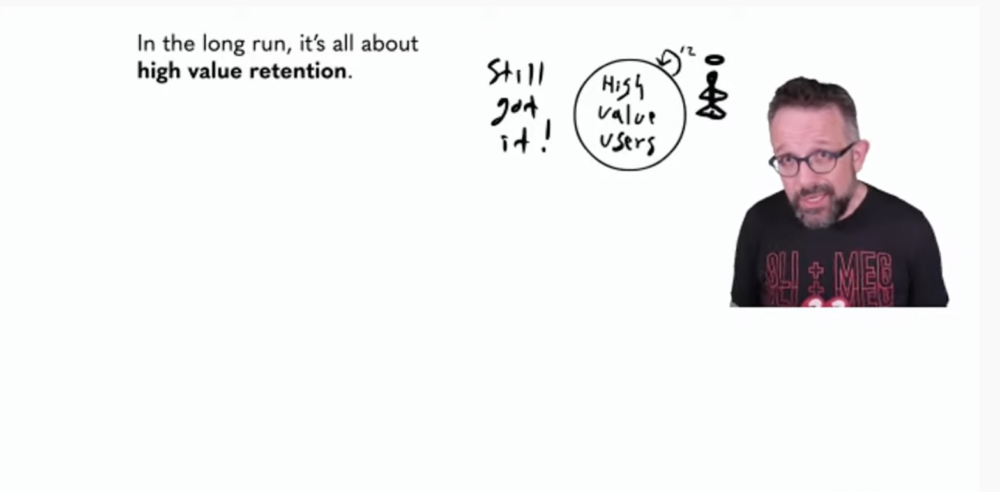At SaaStr Annual’s Digital Day, Phil Libin, CEO of mmhmm and previously CEO of Evernote, shared his top learnings building SaaS products. The talk is definitely focused on the early days, so if you’re at Scale, it may be more of a trip down memory lane … but it was a great and super engaging presentation.
My top 7 learnings from it below:
My top learnings:
#1. Be Careful About the Metrics and Ratios You Pick. At Evernote, there was a push to do more and more analysis on the metrics and numbers. The thesis was many metrics were too easy to game. For example, there are always 7.8 billion people who could use your product — the whole planet :). And your job as a founder is to move a subset to high-value users.
#2. Phil notes almost all startup questions can be answered via a “state machine”. Most users are on “Arrow 11” above — they’ve never used your product. At Evernote, with 450 employees, they had a team on each arrow. And each arrow above that pointed up was bad … and each one that pointed down was good. Now at mmhmm, they set daily goals for each arrow. But you can only try to affect some of them at any given time.
#3. Phil sees most startups pushing too hard on growth too early. The risk then is the bounce — crummy early first-time users don’t stick. We have all seen this :). At Evernote, they conflated bounce with churn — and Phil challenges us not to. They aren’t both retention per se. Retention is 3 things mashed together, “bounce, low-value churn, and high-value churn”, and you have to measure them separately. Phil says 75%-80% bounce rates aren’t uncommon in B2B, and that may be OK if you are highly targeting your customers. But he challenges us to get down to 50% or below. Evernote went from 80% bounces to 40% at the end, and it took 18 months.
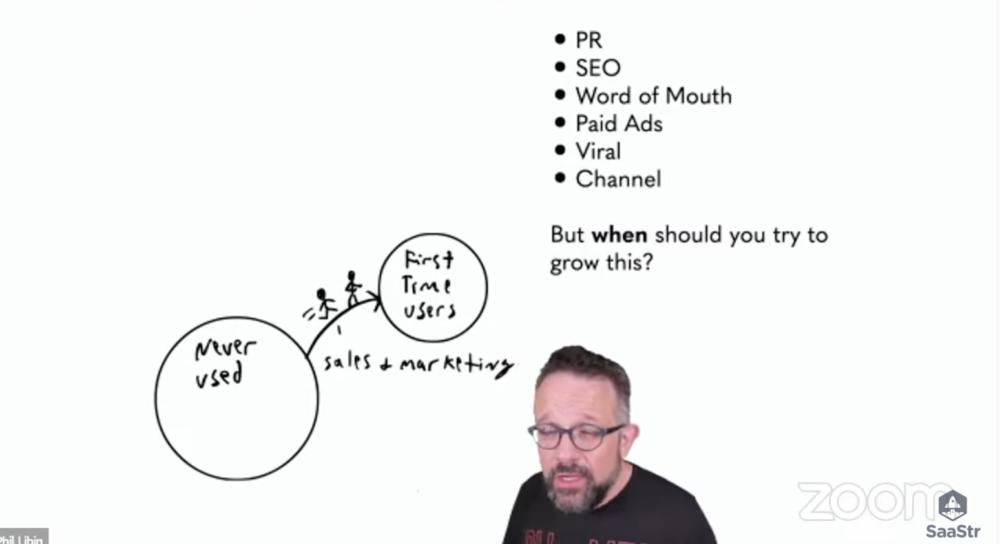
#4. Now, at mmhmm, Bounce rate is high but High-Value Churn is low. A lot of us see this. If we can get folks to do the work to deploy the product, high-value churn is low. But mmhmm is still “too hard” to deploy. By instrumenting this at Evernote, they found a key bug they wouldn’t have focused on otherwise, as it only affected users with 10,000+ Notes.
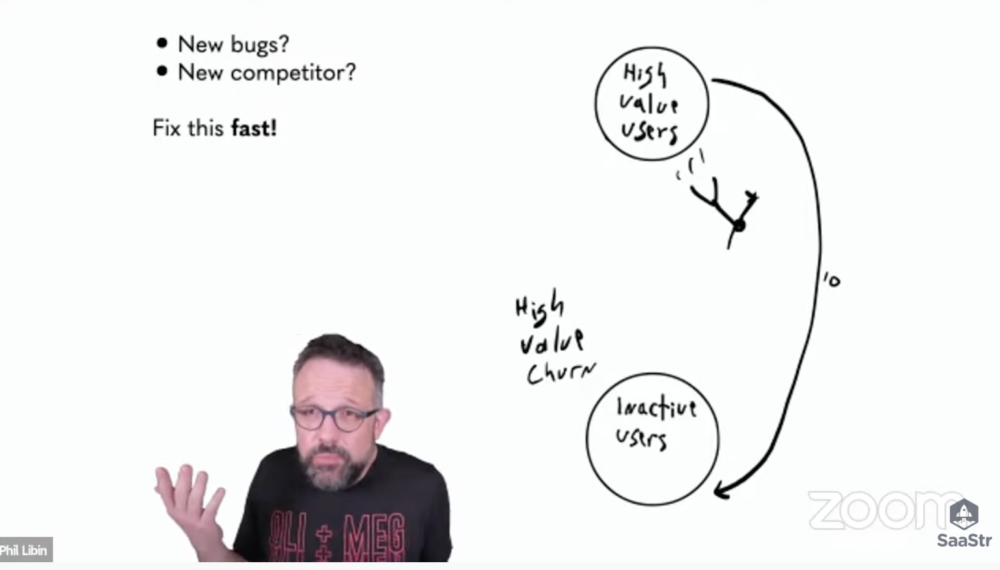
#5. Today, they find anyone that uses their product more than 20 times a month to define “High Value”. That’s where their conversion rate inflects.
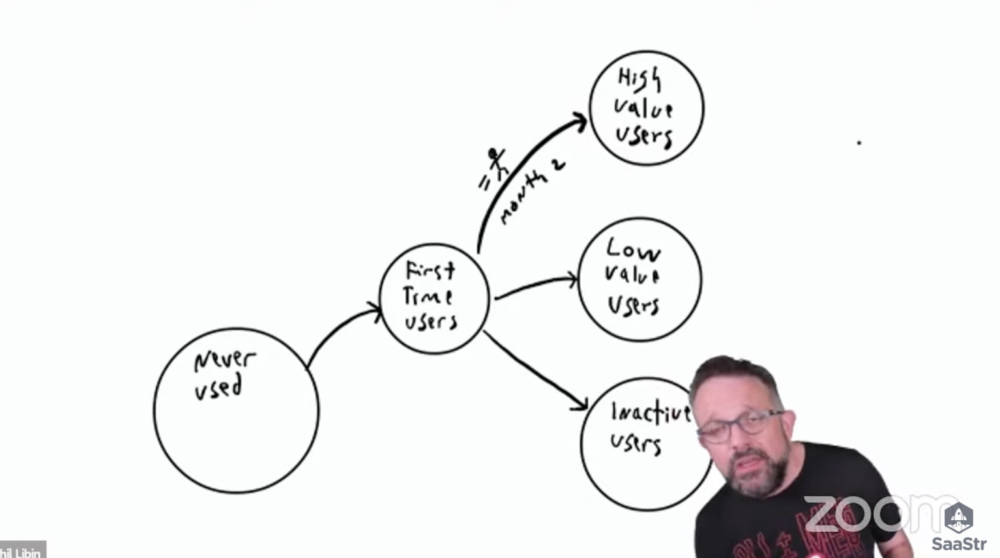
#6. At scale, reactivating your inactive users can be one of your best “acquisition” channels. They’ve at least used you before, and you already have their contact information (and more).
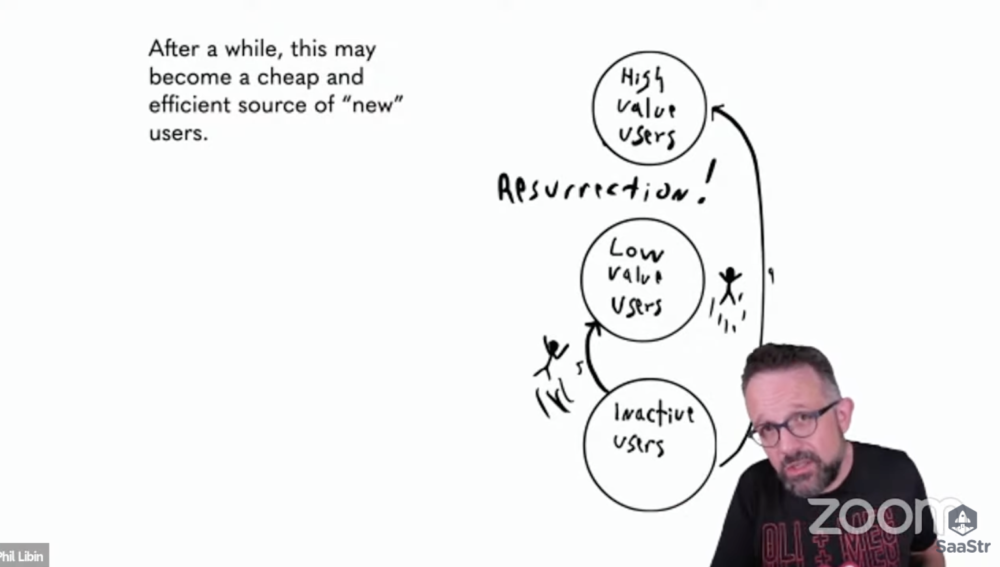
#7. Your High-Value Retention at least needs to be high. Focus your energy here, even if the blended retention isn’t as high as you’d like.
